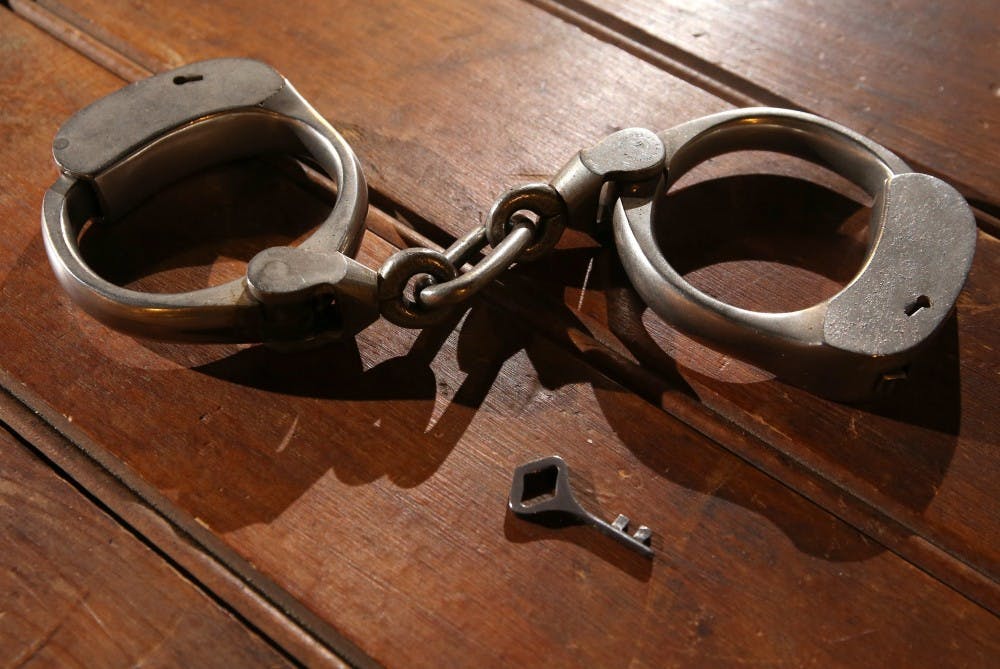In the United States, crime and criminality is heavily sensationalized. With numerous television shows and movies that perpetuate the binaries of “them” vs. “us," “good” vs. “bad,” it’s difficult to have a balanced perspective on crime. If we further analyze, however, and examine our laws and regulations regarding incarceration, these philosophies engrained in our minds about the justice system are challenged.
The U.S. has the largest incarcerated population in the world, point blank. Even though the incarceration rate continues to climb, the crime rate has remained fairly constant. Countries larger or more populous than the U.S. do not hold this record. Another important fact to note is that prisons consist of a disproportionately high number of people of color, more than 70 percent of prisoners are people of color. African Americans are 2 to 11 times more likely to be arrested for a drug related crime than white people are. According to the NYPD, black and Latino people are frisked 85 percent of the time they are stopped; whereas 8 percent of white people stopped are frisked. Black and Latino individuals are not only criminalized more than white people, but also incarcerated more. This is not only true for men, but women of color, too.
Women who are incarcerated are typically drug offenders and it is purported that they get larger sentences because of not having enough information for a plea bargain. Almost 6 in 10 women in state prisons have undergone physical or sexual abuse prior to their arrest. Many also require mental health care, which isn’t very accessible in prisons. They have a history, they have a name and they are not all murderers and black widows.
This semester, I chose to take a Women and Crime class with professor Alesha Durfee, which has helped me tremendously in exploring these concepts and the philosophy behind what it means to be a criminal. Lately, President Obama has been granting clemency to prisoners who were impacted by harsher drug laws than those enforced today. People who were given life-sentences in prison when there were harsher drug laws, would perhaps receive minimal punishment under current laws, depending on other charges and criminal history. This urges me to think deeply about what it means to be a criminal — if some people were given life-sentence for actions that they may not even have been imprisoned for today, what exactly makes a criminal?
I was able to visit a women’s prison in Goodyear and found the experience to be both saddening and strange. Two inmates monitored by an officer drove me across the lot. They joked around a little bit about each other’s hairstyle, followed by a harsh silence, and I thought, had I been in their place, all I'd think about was driving away and never coming back.
I found the thick dust in the courtyard reminiscent of my own public elementary school, along with the library and computer lab. I quickly remembered that even more funding goes to prisons than it does to schools. In the prison where women were serving minimal sentences, I saw women reading, sleeping and apathetically watching some rerun of a daytime soap. They looked tired and at the same time eager to finally see people who weren’t there to order them around.
One woman was ordered to open her cabinet for all of us to see, which I felt uncomfortable about. She neatly stacked some clear plastic bowls, and cleaned up an already neat cabinet, like a host does for a guest — a kind gesture. There were pictures of her child, her friends and her partner, I presume. There were so many pictures, and I felt my heart sink. We couldn’t speak to her, or any other inmate, but it was as though I knew her personality immediately. Not because she was exceptionally special, or connected to me, but because she is a person, not a number or a character.
Durfee brought up an interesting point to our class stating that many of us would not be capable of crime if we tried — we do not have the means, the peers, the know-how or environment. Which makes me think, there are many people who are not capable of living a crime-free life, due to environment, know-how, peers and social structures. Too often we box offenders and prisoners into an untouchable category. They are not to be spoken of, but it benefits all of us to pay attention to these patterns that exist within our system, and what we see as bad or good. We should form our own opinions, listen carefully, and try not to buy into the sensationalized version of criminals we are always fed.
Related links:
Prison Education Conference brings awareness to flawed system
ASU club sheds light on prison education issues through writing
Reach the columnist at anshakoo@asu.edu or follow @ashak21 on Twitter.
Like The State Press on Facebook and follow @statepress on Twitter.
Editor’s note: The opinions presented in this column are the author’s and do not imply any endorsement from The State Press or its editors.
Want to join the conversation? Send an email to opiniondesk.statepress@gmail.com. Keep letters under 300 words and be sure to include your university affiliation. Anonymity will not be granted.




